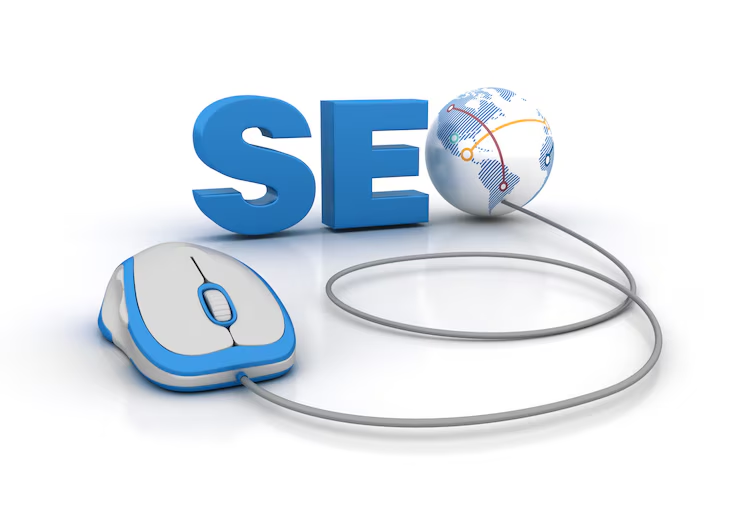
Ads Marketing: The Ultimate Guide to Paid Advertising in 2025
A powerful way to scale your online presence, boost conversions, and grow revenue quickly.
Ads marketing, also known as paid advertising, is a form of digital marketing where businesses pay to promote their products, services, or brand across online platforms such as Google, Facebook, Instagram, YouTube, LinkedIn, and others. Unlike organic marketing, which relies on unpaid efforts like SEO or social media posts, ads marketing offers instant visibility by placing your message directly in front of a targeted audience. It allows precise targeting based on demographics, interests, behaviors, location, and even previous online activity. The most common formats include search ads (which appear in search engine results), display ads (banner ads on websites), social media ads, video ads, and retargeting ads (which re-engage users who previously interacted with your brand). Businesses can choose various bidding models like cost-per-click (CPC), cost-per-thousand-impressions (CPM), or cost-per-acquisition (CPA), giving flexibility and control over budget and performance. Ads marketing is highly measurable, enabling marketers to track impressions, clicks, conversions, and ROI in real time. When executed effectively—with compelling creatives, strong calls to action, and optimized landing pages—ads marketing can significantly accelerate growth, increase brand visibility, and drive profitable conversions in a short period.

Understanding ROAS: How to Measure the Success of Your Ad Campaigns
what a good ROAS looks like, and how to optimize it for better results.
ROAS (Return on Ad Spend) is a key metric in digital advertising that measures the effectiveness of your ad campaigns by comparing the revenue generated to the amount spent on ads. It shows how much income you earn for every rupee or dollar you invest in advertising—for example, a ROAS of 4:1 means you earn ₹4 for every ₹1 spent. ROAS helps businesses understand which campaigns are profitable, where to allocate their budget, and how to optimize performance. By tracking ROAS using tools like Google Ads, Facebook Pixel, or analytics dashboards, marketers can make data-driven decisions that maximize return and minimize wasted spend.
It is calculated by dividing the total revenue earned from an ad campaign by the amount spent on that campaign—offering a clear picture of profitability and efficiency. For instance, if you spend ₹5,000 on Google Ads and earn ₹20,000 in sales, your ROAS is 4:1, meaning you earn ₹4 for every ₹1 spent. A strong ROAS indicates a successful, revenue-generating campaign, while a low ROAS signals the need for optimization. Unlike broader financial metrics like ROI, ROAS focuses specifically on ad performance, making it ideal for adjusting budgets, refining targeting, improving creatives, and maximizing the value of each advertising rupee. With tools like Google Analytics, Facebook Ads Manager, and Shopify reports, tracking ROAS in real time enables marketers to make smarter, data-backed decisions that drive scalable business growth.

What is SMM? A Beginner’s Guide to Social Media Marketing
Introduction In today’s digital age, social media has become an essential part of our daily lives. Businesses, big and small, are leveraging social media platforms to connect with their audience, build brand awareness, and drive sales. This process is known as Social Media Marketing (SMM). But what exactly is SMM, and how can it help businesses grow? This guide will walk you through the basics of Social Media Marketing and how to use it effectively. What is Social Media Marketing (SMM)? Social Media Marketing (SMM) is the process of using social media platforms to promote a brand, product, or service. It involves creating and sharing engaging content, running paid advertisements, and interacting with users to increase brand visibility and customer engagement. Key Components of SMM: Content Creation – Posting relevant and engaging content such as images, videos, infographics, and blogs. Social Media Engagement – Responding to comments, messages, and engaging with followers to build a loyal audience. Paid Advertising – Running targeted ads on platforms like Facebook, Instagram, LinkedIn, and Twitter to reach a broader audience. Analytics & Insights – Tracking performance using tools like Facebook Insights, Google Analytics, and other platform-specific metrics. Influencer Marketing – Collaborating with influencers to promote products and services to a larger audience. Benefits of Social Media Marketing Social Media Marketing offers numerous benefits for businesses, including: 1. Increased Brand Awareness With billions of users on social media, SMM helps businesses reach a vast audience and improve brand visibility. 2. Higher Engagement & Customer Interaction Engaging with customers through comments, likes, and shares helps build relationships and foster brand loyalty. 3. Cost-Effective Marketing Strategy Compared to traditional advertising, social media marketing is relatively affordable and delivers a higher return on investment. 4. Improved Website Traffic & SEO Sharing blog posts, product updates, and promotional content on social media drives traffic to websites, which can enhance search engine rankings. 5. Better Audience Targeting With advanced targeting options, businesses can reach their ideal audience based on demographics, interests, and behaviors. Popular Social Media Platforms for SMM Different social media platforms cater to different audiences. Here are some of the most popular platforms for SMM: Facebook – Ideal for businesses looking to engage with a broad audience through posts, ads, and community groups. Instagram – Best for visual content, including photos, videos, and influencer marketing. Twitter (X) – Great for real-time updates, news, and customer interactions. LinkedIn – A professional network for B2B marketing, networking, and content sharing. TikTok – Effective for short-form video content and viral marketing campaigns. Pinterest – Perfect for businesses in fashion, home decor, food, and lifestyle niches. How to Get Started with SMM If you’re new to Social Media Marketing, follow these simple steps to get started: 1. Define Your Goals Determine what you want to achieve with SMM, such as brand awareness, lead generation, or sales. 2. Choose the Right Platforms Select social media platforms based on your target audience and business niche. 3. Create High-Quality Content Develop engaging and visually appealing content that resonates with your audience. 4. Post Consistently Maintain a regular posting schedule to keep your audience engaged. 5. Engage with Your Audience Respond to comments, messages, and interact with followers to build strong relationships. 6. Use Paid Advertising Invest in social media ads to reach a larger and more targeted audience. 7. Analyze & Optimize Monitor performance metrics and adjust your strategy for better results. Conclusion Social Media Marketing is a powerful tool for businesses looking to expand their reach, engage with customers, and drive growth. By understanding the basics of SMM and implementing effective strategies, businesses can achieve significant success in the digital world. Ready to start your SMM journey? Stay tuned to TECH SAJAL for more digital marketing insights and tips!

What is SEO? A Beginner’s Guide to Search Engine Optimization
Introduction In today’s digital age, businesses and individuals rely on online visibility to attract customers, build brand awareness, and drive traffic to their websites. But how do websites rank higher on Google and other search engines? The answer is SEO (Search Engine Optimization). SEO is the process of optimizing a website to improve its visibility on search engines like Google, Bing, and Yahoo. In this guide, we’ll break down the basics of SEO, its importance, and how it works. What is SEO? SEO stands for Search Engine Optimization. It is a set of techniques used to improve a website’s ranking on search engine results pages (SERPs). The goal is to attract organic (non-paid) traffic by making your website more relevant and useful to users. Why is SEO Important? Here are some key reasons why SEO is essential:






















